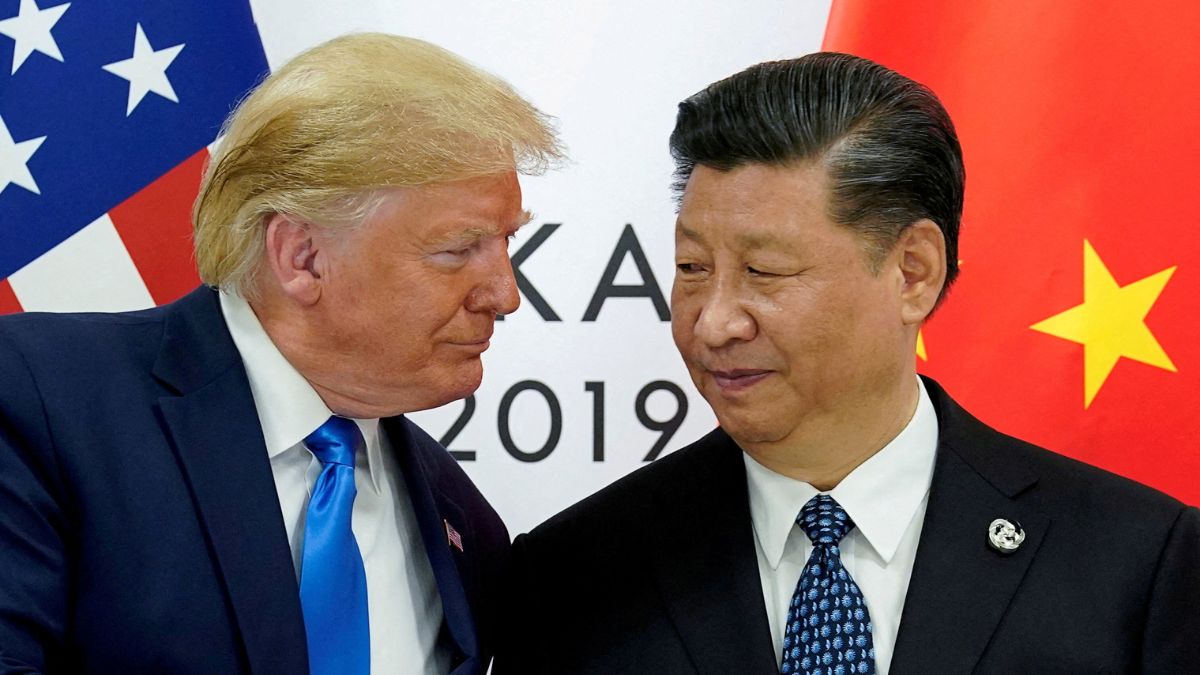As US President Donald Trump takes his country into a retreat from its traditional global hegemonic role, a debate is raging over whether China is poised to fill the vacuum as a force for stability or emerges as a new global threat.
As of now, China’s Xi Jinping has been watchful, making cautious remarks even as his regime deepens ties with West Asia’s neighbours in Central Asia, and keeps other invested players such as Russia, Turkey and Pakistan interested in the regional geopolitics.
STORY CONTINUES BELOW THIS AD
China’s peaceful rise: Fact or facade?
China’s ascent over the past four decades is often pitched by its leadership as remarkably peaceful. Interestingly, China gives a twist to its aggressive postures against neighbours from island nation Taiwan to emerging global power India, saying it has avoided military engagements with these countries.
It also takes credit for not meddling in foreign countries militarily and the People’s Liberation Army (PLA) not causing foreign casualties in recent history. However, China has supplied weapons and, reportedly, provided training to foreign militaries such as Russia, Pakistan and North Korea as these countries either fight war against neighbours or needle with military threats or proxy wars.
More from World
China pushes a narrative of being a country that is focused on humanitarian missions, including peacekeeping and counter-piracy operations, presenting itself as a responsible stakeholder in global affairs.
However, two recent turning points have thrust China into the spotlight as possible and potential stabiliser in the event of total retreat of the US under Trump’s presidency:
-
The war in Ukraine, which created expectations for China to play a mediating role in international crises.
-
The Munich Security Conference, where doubts about US reliability led many nations to look to China for leadership and stability.
Regional relations and flashpoints
India and the border dispute
China’s relations with its neighbours remain complex. It officially describes the 2020 Galwan Valley clash with India as an unfortunate accident rather than a deliberate provocation.
India came out with statements detailing the sequence of events that led to the Galwan clash, however, China neither refuted it nor came up with a statement clarifying its moves. After a longish stand-off, the two countries agreed to disengage, reducing the troops deployed in the high mountains.
Despite lingering distrust, there is recognition of India’s rising global stature — projected to become the world’s third-largest economy by 2030 — and the potential for future cooperation, particularly in securing vital Indian Ocean sea lanes.
China has recently reached out to India as it faces Trump-led Western backlash for using its supply-chain dominance for strategic objectives. In the changing geopolitical equations, China is unlikely to take an open anti-India stance.
STORY CONTINUES BELOW THIS AD
Taiwan and the South China Sea
On Taiwan, China maintains that peaceful reunification is the preferred path, though it insists that force remains an option if moves toward independence escalate. One China position is recognised by 180 countries worldwide. But China continues to build military pressure over Taiwan with relentless naval and air exercises in the Taiwanese waters.
In the South China Sea, China virtually claims all of the Pacific bay. However, China officially says that its claims are limited to specific rocks and islands as defined under the United Nations Convention on the Law of the Sea (Unclos), rather than the entire maritime region. Its maritime neighbours including the Philippines dispute Chinese claims on these islands.
However, China cites joint anti-piracy operations with the Indian Navy among others as its cooperative efforts and also as evidence of its willingness to work with regional partners.
China’s expanding role in West Asia
China’s footprint in West Asia has grown significantly, both politically and militarily. Notable diplomatic initiatives include mediating the rapprochement between Saudi Arabia and Iran, as well as facilitating what is known as the Beijing Declaration to coordinate Palestinian factions.
Since 2008, China has also maintained counter-piracy operations in the Indian Ocean. While energy dependence on the region is a shared concern with countries like India, China remains cautious about deeper military involvement in volatile areas such as Gaza or the Red Sea, citing logistical challenges.
It has also secured access to key ports on western coast of the Arabian Sea in Yemen and Djibouti besides its control over Pakistan’s Gwadar.
STORY CONTINUES BELOW THIS AD
US-China dynamics the Trump-era multipolarity
The return of Trump-era tariffs and protectionist policies is viewed as a sign of US decline, with expectations that a second Trump term could further erode American global credibility. China, in response, has worked to reduce its economic dependence on the US since Trump’s first term, and both countries are expected to eventually return to the negotiating table due to mutual economic reliance.
The world is increasingly seen as moving towards multipolarity, with China and India emerging as key players. China’s growing influence brings with it heightened expectations to stabilise troubled regions, as seen in its recent West Asia diplomacy. However, unresolved disputes — such as those in the South China Sea, along the India-China border, and

